Growing Swiss Chard might seem intimidating, but trust me, it’s one of the most rewarding and surprisingly easy vegetables to cultivate in your own backyard! I remember my grandmother, a true gardening guru, always having vibrant rows of Swiss chard gracing her garden. For generations, this leafy green has been a staple in Mediterranean cuisine, prized not only for its nutritional powerhouse but also for its beautiful, colorful stalks that add a touch of artistry to any garden.
Are you tired of bland salads and boring side dishes? Do you crave fresh, homegrown goodness without the hassle of complicated gardening techniques? Then you’re in the right place! This DIY guide is packed with simple, effective tricks and hacks that will transform you into a Swiss chard-growing pro, even if you’ve never held a trowel before. We’ll cover everything from seed selection to harvesting, ensuring you have a bountiful supply of this delicious and nutritious vegetable all season long.
Why should you bother growing Swiss Chard yourself? Well, store-bought chard often lacks the freshness and vibrant flavor of homegrown varieties. Plus, you’ll know exactly what’s gone into your food – no pesticides or questionable practices! So, let’s ditch the grocery store greens and embark on this exciting gardening adventure together. Get ready to impress your friends and family with your homegrown Swiss chard creations!
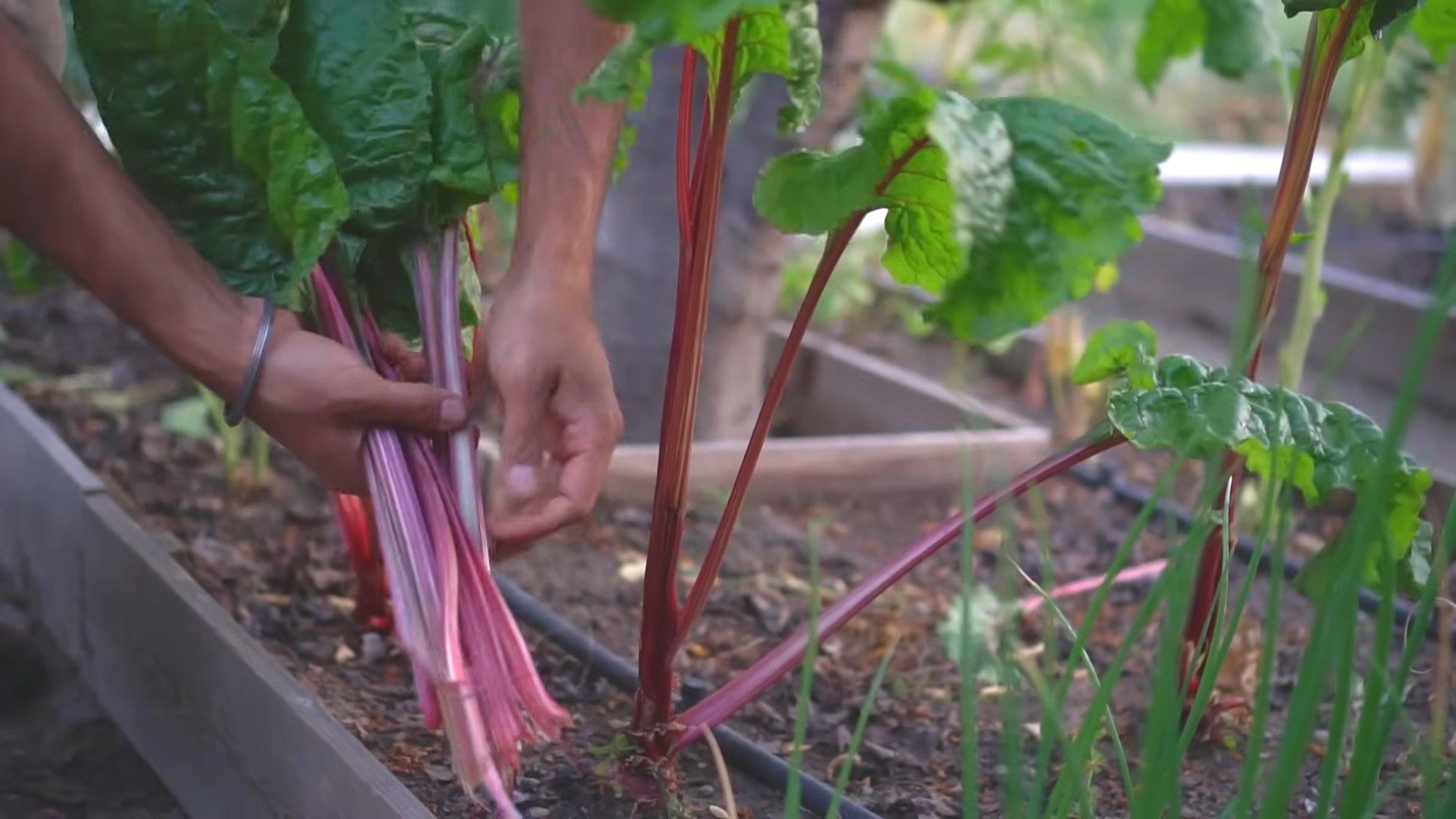
Growing Swiss Chard: A Beginner’s Guide to Bountiful Harvests
Hey there, fellow gardening enthusiasts! I’m so excited to share my experience with growing Swiss chard. It’s one of my absolute favorite vegetables to grow – not only is it incredibly nutritious, but it’s also stunningly beautiful in the garden. Plus, it’s surprisingly easy to cultivate, even for beginners. So, grab your gardening gloves, and let’s dive into the wonderful world of Swiss chard!
Why Swiss Chard?
Before we get into the nitty-gritty, let’s talk about why you should consider adding Swiss chard to your garden.
* Nutritional Powerhouse: Swiss chard is packed with vitamins A, C, and K, as well as minerals like magnesium, potassium, and iron. It’s a true superfood!
* Year-Round Harvest: Depending on your climate, you can harvest Swiss chard almost year-round. It’s relatively cold-hardy and can tolerate light frosts.
* Beautiful Colors: With its vibrant stems in shades of red, yellow, orange, and white, Swiss chard adds a splash of color to any garden.
* Versatile in the Kitchen: You can use Swiss chard in countless dishes, from salads and soups to stir-fries and quiches.
* Easy to Grow: Seriously, it’s one of the easiest leafy greens to grow. It’s relatively pest-resistant and doesn’t require a lot of fuss.
Getting Started: Planting Swiss Chard
Okay, let’s get our hands dirty! Here’s everything you need to know about planting Swiss chard.
Choosing the Right Variety
There are several varieties of Swiss chard to choose from, each with its own unique characteristics. Here are a few of my favorites:
* Bright Lights: This is probably the most popular variety, known for its rainbow of stem colors. It’s a real showstopper in the garden!
* Fordhook Giant: This variety produces large, dark green leaves with thick, white stems. It’s a classic choice for its excellent flavor and productivity.
* Lucullus: This variety has crinkled, light green leaves and thick, white stems. It’s known for its mild flavor and tender texture.
* Ruby Red: As the name suggests, this variety has vibrant red stems and dark green leaves. It adds a beautiful pop of color to any dish.
I recommend trying a few different varieties to see which ones you like best.
When to Plant
The best time to plant Swiss chard depends on your climate.
* Cool Climates: You can start seeds indoors 4-6 weeks before the last expected frost or direct sow them in the garden 2-4 weeks before the last expected frost.
* Warm Climates: You can plant Swiss chard in the fall for a winter harvest or in the early spring for a spring harvest. Avoid planting during the hottest months of summer, as the heat can cause the plants to bolt (go to seed).
I usually start my seeds indoors in early spring to get a head start on the growing season.
Where to Plant
Swiss chard prefers a sunny location with well-drained soil. It can tolerate partial shade, especially in hot climates.
* Sunlight: Aim for at least 6 hours of sunlight per day.
* Soil: Swiss chard prefers a soil pH of 6.0 to 7.5. Amend your soil with compost or other organic matter to improve drainage and fertility.
* Spacing: Space plants 12-18 inches apart in rows 18-24 inches apart.
I always amend my soil with plenty of compost before planting. It really makes a difference in the health and productivity of my plants.
Starting Seeds Indoors (Optional)
If you want to get a head start on the growing season, you can start your Swiss chard seeds indoors.
1. Sow Seeds: Fill seed trays or small pots with seed-starting mix. Sow seeds 1/2 inch deep and water gently.
2. Provide Light: Place the trays or pots under grow lights or in a sunny window.
3. Keep Moist: Keep the soil consistently moist but not soggy.
4. Harden Off: Once the seedlings have developed a few sets of true leaves, gradually acclimate them to outdoor conditions by exposing them to increasing amounts of sunlight and wind over a period of 7-10 days.
Direct Sowing Seeds
If you prefer to direct sow your seeds, follow these steps:
1. Prepare the Soil: Clear the planting area of weeds and debris. Amend the soil with compost or other organic matter.
2. Sow Seeds: Sow seeds 1/2 inch deep and 1-2 inches apart.
3. Water Gently: Water the soil gently to avoid disturbing the seeds.
4. Thin Seedlings: Once the seedlings have emerged, thin them to 12-18 inches apart.
Caring for Your Swiss Chard
Once your Swiss chard plants are established, they’re relatively low-maintenance. Here’s what you need to do to keep them happy and healthy.
Watering
Water your Swiss chard plants regularly, especially during dry periods. Aim to keep the soil consistently moist but not soggy. I usually water deeply once or twice a week, depending on the weather.
Fertilizing
Swiss chard is a heavy feeder, so it benefits from regular fertilization.
* At Planting: Mix compost or other organic matter into the soil before planting.
* During the Growing Season: Side-dress plants with compost or a balanced fertilizer every 4-6 weeks.
I like to use a liquid seaweed fertilizer every few weeks to give my plants a boost.
Weeding
Keep the planting area free of weeds, as they can compete with your Swiss chard plants for nutrients and water. I usually hand-weed my garden regularly to prevent weeds from getting out of control.
Pest and Disease Control
Swiss chard is relatively pest-resistant, but it can be susceptible to a few common pests and diseases.
* Aphids: These tiny insects can suck the sap from your plants, causing them to weaken and become distorted. You can control aphids by spraying them with a strong stream of water or by using insecticidal soap.
* Slugs and Snails: These pests can munch on the leaves of your Swiss chard plants, leaving behind unsightly holes. You can control slugs and snails by hand-picking them off the plants or by using slug bait.
* Leaf Miners: These pests tunnel through the leaves of your Swiss chard plants, leaving behind unsightly trails. You can control leaf miners by removing and destroying infested leaves.
* Downy Mildew: This fungal disease can cause yellow spots on the leaves of your Swiss chard plants. You can prevent downy mildew by providing good air circulation and avoiding overhead watering.
I always try to use organic pest and disease control methods whenever possible.
Harvesting Your Swiss Chard
The best part about growing Swiss chard is harvesting it! You can start harvesting leaves as soon as they are large enough to eat, usually about 6-8 weeks after planting.
* Cut Outer Leaves: Harvest the outer leaves first, leaving the inner leaves to continue growing.
* Cut at the Base: Cut the leaves at the base of the plant, about 2 inches above the ground.
* Regular Harvesting: Regular harvesting encourages the plant to produce more leaves.
I love to harvest my Swiss chard in the morning, when the leaves are crisp and fresh.
Using Your Swiss Chard
Now that you’ve harvested your Swiss chard, it’s time to enjoy it! Here are a few of my favorite ways to use Swiss chard:
* Salads: Young, tender Swiss chard leaves can be used in salads.
* Sautéed: Sauté Swiss chard with garlic and olive oil for a simple and delicious side dish.
* Soups and Stews: Add Swiss chard to soups and stews for extra flavor and nutrition.
* Stir-Fries: Stir-fry Swiss chard with other vegetables and protein for a quick and easy meal.
* Quiches and Frittatas: Add Swiss chard to quiches and frittatas for a healthy and flavorful twist.
I also like to blanch and freeze Swiss chard for later use.
Troubleshooting
Even with the best care, you may encounter some problems when growing Swiss chard. Here are a few common issues and how to address them:
* Bolting: Bolting is when the plant prematurely goes to seed. This can be caused by hot weather or stress. To prevent bolting, provide shade during the hottest part of the day and water regularly.
* Yellowing Leaves: Yellowing leaves can
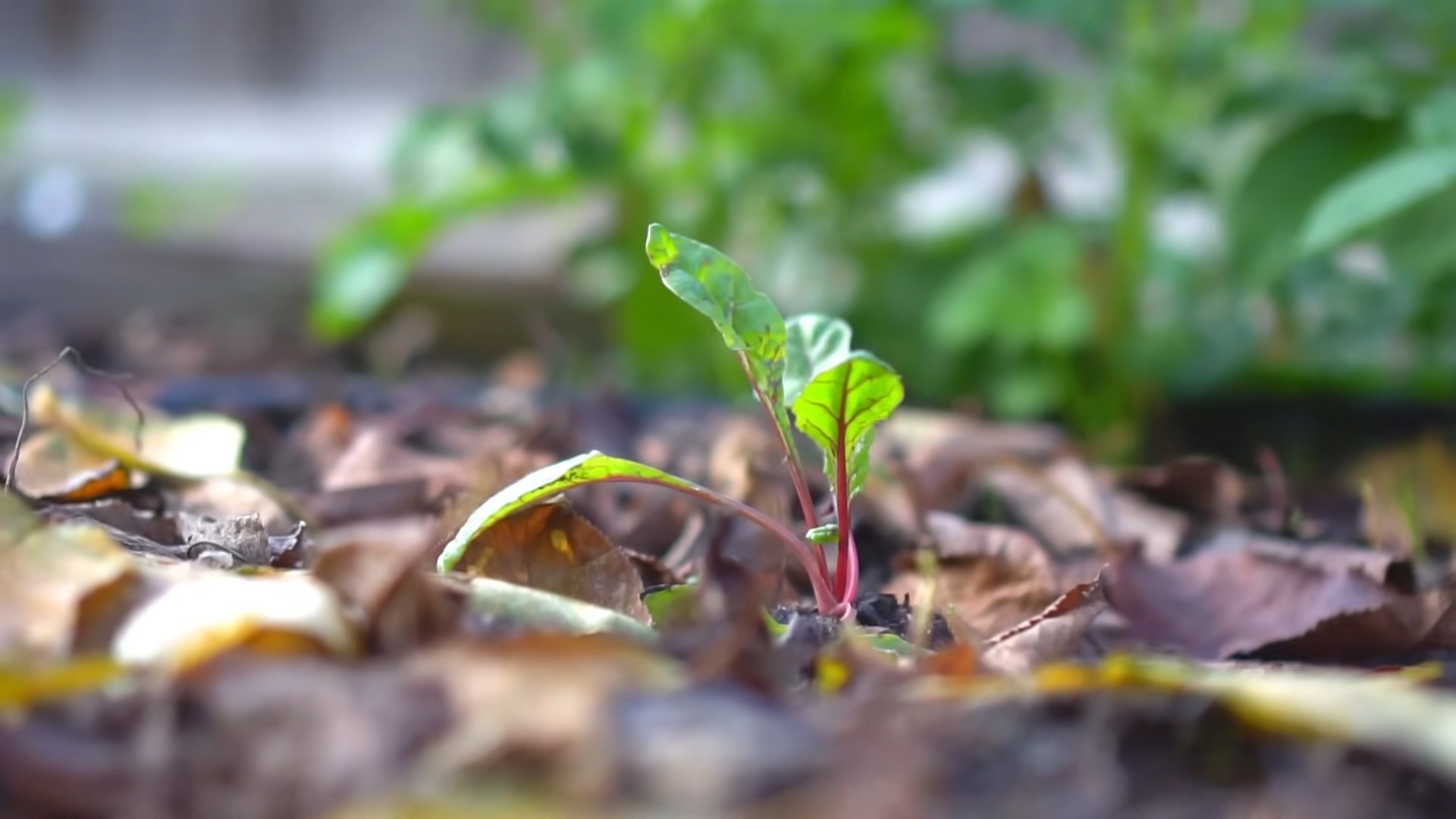
Conclusion
So, there you have it! Growing Swiss chard at home, even if you’re a complete beginner, is not only achievable but incredibly rewarding. We’ve walked you through the entire process, from seed to harvest, highlighting the simplicity and satisfaction that comes with nurturing your own vibrant, leafy greens.
Why is this DIY trick a must-try? Because it puts you in control of your food source. You know exactly what goes into your Swiss chard – no pesticides, no hidden chemicals, just pure, unadulterated goodness. Plus, the taste of freshly harvested Swiss chard, bursting with flavor and nutrients, is simply unmatched by anything you can buy in a store. It’s a culinary experience that elevates your meals and nourishes your body.
Beyond the health benefits and superior taste, growing your own Swiss chard is also an incredibly sustainable practice. You’re reducing your carbon footprint by eliminating transportation costs and packaging waste. You’re also connecting with nature in a tangible way, fostering a deeper appreciation for the food we eat and the environment that sustains us.
But the best part? It’s adaptable! Feel free to experiment with different varieties of Swiss chard. Try ‘Bright Lights’ for a rainbow of colorful stems, or ‘Fordhook Giant’ for larger, more substantial leaves. You can also adjust the planting schedule to suit your local climate and growing season. If you’re short on space, consider growing Swiss chard in containers on your balcony or patio. The possibilities are endless!
Don’t be afraid to get your hands dirty and embrace the joy of gardening. Growing Swiss chard is a fantastic way to add fresh, healthy greens to your diet, connect with nature, and reduce your environmental impact. It’s a win-win-win!
We wholeheartedly encourage you to try this DIY trick for growing Swiss chard. Start small, be patient, and don’t be afraid to make mistakes. Gardening is a learning process, and every challenge is an opportunity to grow, both literally and figuratively.
Once you’ve harvested your first batch of homegrown Swiss chard, we’d love to hear about your experience! Share your photos, tips, and recipes with us in the comments below. Let’s create a community of Swiss chard enthusiasts and inspire others to embrace the joys of home gardening. Happy growing!
Frequently Asked Questions (FAQ)
What are the best conditions for growing Swiss chard?
Swiss chard thrives in full sun to partial shade. Ideally, it needs at least 6 hours of sunlight per day, but it can tolerate some shade, especially in hotter climates. The soil should be well-draining and rich in organic matter. A slightly acidic to neutral pH (6.0 to 7.0) is optimal. Consistent moisture is also crucial, so water regularly, especially during dry spells.
How often should I water my Swiss chard plants?
Water your Swiss chard plants deeply and regularly, especially during hot and dry weather. Aim to keep the soil consistently moist but not waterlogged. A good rule of thumb is to water when the top inch of soil feels dry to the touch. Mulching around the plants can help retain moisture and suppress weeds.
What kind of fertilizer should I use for Swiss chard?
Swiss chard benefits from regular fertilization. Before planting, amend the soil with compost or well-rotted manure. During the growing season, you can feed your plants with a balanced organic fertilizer every 4-6 weeks. Alternatively, you can use a liquid fertilizer diluted to half strength every 2-3 weeks. Avoid over-fertilizing, as this can lead to excessive leaf growth at the expense of root development.
When is the best time to harvest Swiss chard?
You can start harvesting Swiss chard leaves as soon as they are large enough to eat, typically when they are about 6-8 inches long. Harvest the outer leaves first, leaving the inner leaves to continue growing. This cut-and-come-again method allows you to enjoy a continuous harvest throughout the growing season.
What are some common pests and diseases that affect Swiss chard?
Swiss chard is generally resistant to pests and diseases, but it can be susceptible to certain problems, such as aphids, flea beetles, and leaf miners. Aphids can be controlled with insecticidal soap or a strong spray of water. Flea beetles can be deterred by covering the plants with row covers. Leaf miners can be controlled by removing and destroying infested leaves. Fungal diseases, such as powdery mildew, can be prevented by ensuring good air circulation and avoiding overhead watering.
Can I grow Swiss chard in containers?
Yes, Swiss chard grows well in containers. Choose a pot that is at least 12 inches deep and wide to allow ample room for root growth. Use a well-draining potting mix and water regularly. Container-grown Swiss chard may need more frequent fertilization than plants grown in the ground.
How do I store Swiss chard after harvesting?
To store Swiss chard, wash the leaves thoroughly and pat them dry. Wrap them loosely in a paper towel and store them in a plastic bag in the refrigerator. Swiss chard can be stored for up to a week. You can also freeze Swiss chard by blanching it in boiling water for 2 minutes, then plunging it into ice water. Drain well and store in freezer bags.
What are some ways to use Swiss chard in cooking?
Swiss chard is a versatile vegetable that can be used in a variety of dishes. It can be sautéed, steamed, boiled, or added to soups, stews, and casseroles. The leaves can be used in salads, and the stems can be cooked like asparagus. Swiss chard is also a good source of vitamins, minerals, and antioxidants.
Is Swiss chard the same as spinach?
No, Swiss chard and spinach are different vegetables, although they are both leafy greens. Swiss chard has a slightly stronger, more earthy flavor than spinach. It also has thicker stems and leaves. Spinach is more delicate and has a milder flavor.
Can I eat the stems of Swiss chard?
Yes, the stems of Swiss chard are edible and nutritious. They have a slightly different texture and flavor than the leaves. The stems can be cooked separately from the leaves, or they can be added to the same dish. They are often sautéed, steamed, or added to soups and stews.
How can I prevent my Swiss chard from bolting (going to seed)?
Bolting is when a plant prematurely flowers and sets seed, often making the leaves bitter. To prevent Swiss chard from bolting, especially in warmer climates, provide some afternoon shade. Consistent watering and avoiding stress to the plant can also help. Choose bolt-resistant varieties if you live in an area with long, hot summers.
What are the benefits of growing Swiss chard organically?
Growing Swiss chard organically means avoiding the use of synthetic pesticides, herbicides, and fertilizers. This is beneficial for your health, the environment, and the flavor of your Swiss chard. Organic gardening practices promote healthy soil, which in turn produces healthier plants. It also reduces the risk of harmful chemicals contaminating your food and the environment.

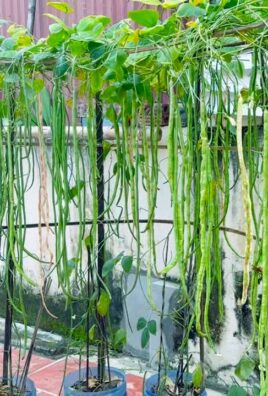
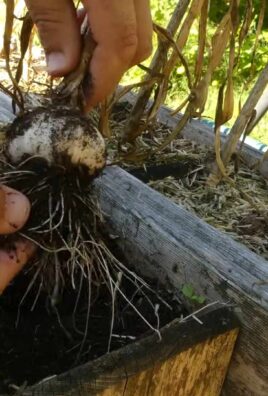
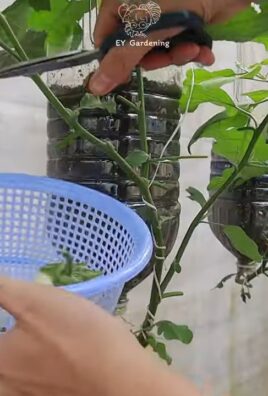
Leave a Comment